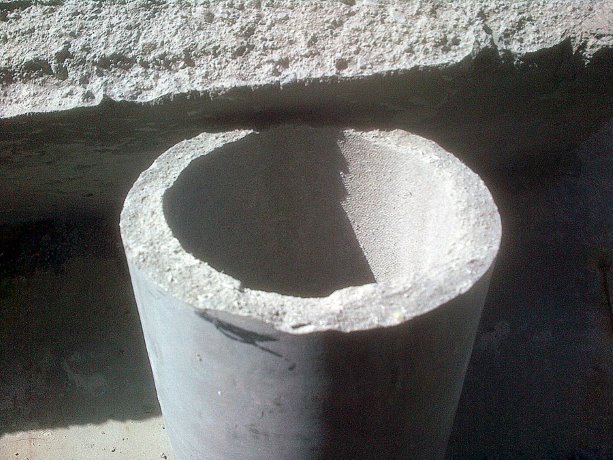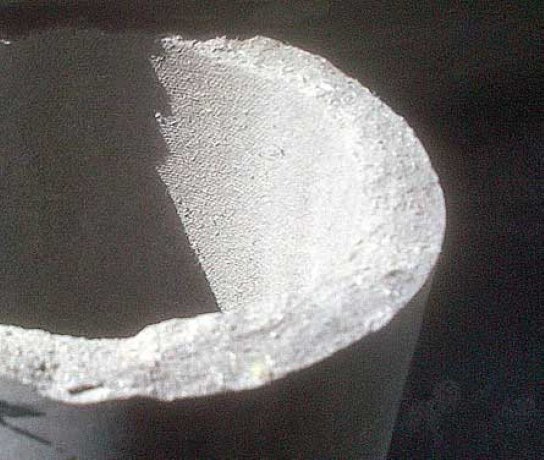The federal government has announced a comprehensive ban on asbestos, promising to create new regulations that will prohibit the manufacture, use, import and export of a mineral that was once commonly used in construction and has ravaged the health of thousands of construction workers for decades.
Science Minister Kirsty Duncan and three other ministers on hand in Ottawa for the Dec. 15 announcement also pledged to work to reform national, provincial and territorial building codes to prohibit the use of asbestos in construction projects across Canada, expand the list of asbestos-contaminated federal buildings and work towards recognizing the Rotterdam Convention against asbestos use.
The government declared a 2018 deadline for implementation of the new policies.
The International Agency for Research on Cancer declared asbestos a carcinogen in 1987 but it was still mined and exported from Quebec until 2011 and is still in limited use, with imports rising, in the construction and automotive sectors and elsewhere.
Both Fred Clare, the international vice-president of the International Association of Heat and Frost Insulators and Allied Workers, and Hassan Yussuff, president of the Canadian Labour Congress (CLC), spoke with emotion as they contemplated lives lost due to asbestos exposure.
Yussuff, who worked at a General Motors plant fixing broken transmissions and was regularly exposed to shredded asbestos, said he had mixed feelings when he listened to news of the ban that morning.
"I was totally euphoric, I thought, my gosh, finally it’s happening," he said. "And of course, on the other hand, I thought, why did it take so long?
"I know why it took so long. The politics of our country is always complicated and as long as Quebec was mining it, the federal government would be very reluctant to wade in and do the right thing. Once the mine was closed, it made it much clearer."
Clare was an insulation worker, as were his father and two uncles, for decades during an era when asbestos insulation and similar materials were handled casually.
At the height of its use, a federal fact sheet noted, asbestos was found in more than 3,000 applications worldwide, including roofing, thermal and electrical insulation, cement pipe and sheets, flooring, gaskets and friction materials such as brake pads and shoes. Even today, it’s estimated that 150,000 Canadians are still exposed to asbestos in workplaces.
Clare watched as his father and uncles died of throat cancer, mesothelioma and asbestosis, respectively.
"I was knee deep in the stuff, mixing it by hand in troughs," said Clare. "Most materials contained asbestos on the work we did as insulators, you couldn’t get away from it."
Statistics reported by the insulators indicate that plumbers, pipefitters and insulators were the most frequent victims of occupational disease claims, and even though widespread use of pure asbestos began to diminish almost 30 years ago, the fibres linger in the body and asbestos-related diseases still claim over 2,000 lives a year today.
Clare said people find it hard to believe asbestos is still in use in Canada after its hazards have become so well known and 56 countries have signed the 1998 Rotterdam Convention.
"When I first brought it up, people actually laughed at me and questioned whether it was true or not," said Clare.
The federal government pledged to implement the ban after comprehensive negotiations with provinces and territories and multiple stakeholders over the next two years.
Clare said the regulations permitting use of asbestos in brake pads and materials such as asbestos-cement insulation pipes often found in parking garages are pervasive.
"There’s lots to do at the municipal and federal level," said Yussuff.
National support for the ban has been gathering for years. In 2011, WorkSafeBC launched an asbestos awareness website and has stepped up enforcement in recent years, reports the Journal of Commerce. Just this month, the City of North Vancouver, which is experiencing a boom of home renovations, voted to officially support a national asbestos ban.
At this point, a federal building registry has been launched but Saskatchewan is the only province that has a registry of public buildings containing asbestos — important for renovators to know and also first responders acting in an emergency, noted Ontario MPP Bob Bailey. The Sarnia legislator has introduced a private member’s bill calling for an asbestos ban in his province as well as the introduction of an Ontario registry of public buildings constructed with asbestos.
"We know this is a hazard, so why are we still using it?" said Bailey. "We need to put a complete stop to it and make the workplace safe for our loved ones and our families."
Other groups issued statements supporting the federal initiatives immediately after the ban was announced.
"Our members in the construction industry are some of the hardest hit by asbestos related diseases because of exposures through their work," said Tom Sigurdson, executive director of the BC Building Trades. "This is a critically important step that will save workers lives."
Bob Blakely, Canadian operating officer of Canada’s Building Trades Unions (CBTU), said, "This announcement reflects this government’s commitment to the health and safety of the Canadian workforce and indeed, all Canadians."
"This is a sign that the government understands the pain asbestos has caused within our workforce," added Robert Kucheran, general vice-president of the International Union of Painters and Allied Trades, who is also chairman of the Canadian Executive Board of the CBTU.

Pictured is a pipe at a recent Toronto condo build. Current guidelines permit some uses of asbestos-cement pipe and other applications with the expectation that safe cutting methods will be used, but problems emerge when crews use power saws or other unsafe methods, sending asbestos fibres into the air.
Photo: International Association of Heat and Frost Insulators and Allied Workers"








Recent Comments
comments for this post are closed